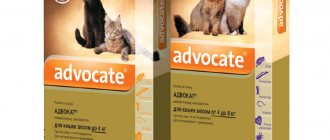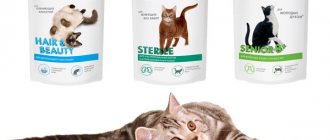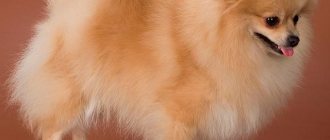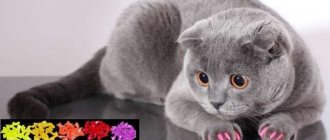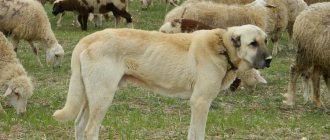For many cat lovers, purebred animals are a priority, but it is important to know that ordinary mongrel cats, which are popularly called mongrels, are in no way inferior to their purebred relatives. Simple yard cats often have excellent, good health; kittens get sick less and develop better because their immunity is much stronger. However, despite their unpretentiousness and ease of care and maintenance, mongrels also need to be loved and pampered no less than the most expensive cat breeds.
Description of the variety, pros and cons
Non-pedigreed cats make up 90% of the cat species on the entire planet. A cat without a pedigree may have different variations in appearance, body shape, coat length and color. Such a feline is called a mongrel, which means it does not belong to any valuable species. The ancestors of all mongrels, including purebred relatives, were wild cats, which were domesticated over time and taught to serve for the benefit of their owner.
Advantages
The main advantages that purebred cats have are:
- Unpretentiousness in food. Regular homemade food is perfectly digested and absorbed by the pet, and the animal has no problems with digestion, intestinal function or kidney function.
- Endurance, the ability to withstand adverse environments. Even a small kitten is more adapted to survive in harsh conditions, while its purebred relative most likely will not be able to cope with the problem and will die.
- Affordable price. Striped pets are often given into good hands for free or for a small nominal fee. Pedigree cats, on the contrary, are very expensive.
- Good immunity. An ordinary cat is seasoned, it does not have congenital pathologies or genetic mutations. Therefore, viral infectious diseases are not so scary for a mongrel; if you provide your pet with timely help, most likely he will quickly recover and recover.
Flaws
The owners do not always like their unique and freedom-loving disposition.
But outbred cats also have disadvantages, the main of which are:
- Lack of status, due to which the animal cannot take part in international exhibitions, competitions, competitions.
- Bad character, the characteristics of which are often passed on from parents.
- The difficulty of upbringing and teaching manners, especially if children spent the first months of their lives on the street.
- Susceptibility to diseases such as helminthiasis and various infections. A backyard cat often gets sick with them and takes a long time to be treated for these diseases, since it spends a lot of time outside.
Strengths of mongrels
Each purebred cat is unique and valued for some of its exceptional characteristics. Yard mustaches may in some ways not be comparable to their purebred counterparts, but they have a lot of advantages:
- Health. The life expectancy of mongrels is usually longer than that of purebred purrs, because the former have a stronger and more lasting immunity to most street infections. Selection work weakens the protective functions of the cat’s body.
- Temperament. Domestic breeds have the most flexible and gentle character. If such a cat is picked up on the street, then its joy will know no bounds - it will become attached to its owner for life.
- Knitting. Finding a partner for a yard pet will not be difficult. Most likely you will have many options to choose from. Waiting for a new offspring is always a mystery, because it is impossible to predict what coat color, color and eye shape the future kittens will have. It is quite possible that such a kitten will become the founder of a new breed.
- Help with housekeeping. Catching an annoying rodent will not be difficult for a mongrel; they have a well-developed natural instinct.
- Exhibitions. There are exhibitions for outbred pets, where the external characteristics of purrs and their grooming are assessed. It’s great that yard breeds also have the opportunity to show themselves in all their glory.
- Price. Anyone can buy a yard pet. Usually they come to visit themselves, offering to leave themselves. In this case, it is almost impossible to refuse.
Types of appearance: a combination of simplicity and grace
A cat without a pedigree can have any coat color. Gray, red, tabby, blue, and tricolor cats are often found. A black cat with a white collar and socks is considered popular. But pure white outbred animals are rare, so if a kitten with white fur is born in the litter, then most likely his dad has genes of a certain breed in his blood.
The animal has an average body length, weight ranges from 3.5-5 kg. Conventionally, outbred mongrels are divided into 2 types:
- Northern. This species is distinguished by its harsh appearance, massive build, and long thick fur, as these cats live in difficult climatic conditions.
- Southern. This variety has an appropriate description: an elegant, graceful body, a thin skeleton, short hair with no pronounced undercoat.
Symbols in the table of cat colors.
Blue background: Solid/Self Pink background: Tabby Yellow background: Colorpoints When colors overlap you will see the corresponding background color - purple or orange.
Red text: color exists only in purebred cats and is not found in outbred cats. Gray text: color is not recognized for purebred cats. It can appear in cats, but in the list of breed colors, instead of “any colors are acceptable,” you should read “All colors, excluding those marked gray.” “Name in quotation marks”: terms commonly used but meaningless in the official language used to refer to cat color.
For convenience, the description of cat colors is divided into logical parts, highlighted in the table with different colors:
Colorpoint colors in cats.
Colorpoint is a form of albinism in which warm areas of the body are paler in color than the rest, resulting in “spotting” on the face, paws and tail. The color of the coat is determined by the color of the spots. The black color in all colorpoint colors is replaced by brown of varying intensity.
The dependence of color on temperature leads to some interesting effects:
- Kittens are born with a smooth transition between light and colored areas
- The spots become darker with age
- In cats living in countries with cold climates, the contrast of spots is more pronounced
- In winter the spots are lighter than in summer
Based on the contrast of spots, colorpoint colors are conventionally divided into three groups - with maximum, medium and low contrast. Based on the color of the coloring pigment, colors are also divided into groups - based on black pigment (eumelanin), red (pheomelanin) and both pigments at the same time.
Character and habits
In response to affection and care, the animal will always respond with gratitude.
What character traits will prevail in a mongrel primarily determines the owner’s attitude towards the animal. If a simple cat lives in good conditions, is loved, cherished and treated like a purebred, then the animal will behave accordingly. Otherwise, the pet's survival instincts will be more developed. If the owner offends a cat, he will grow up wild, unsociable, and aggressive. However, sometimes the mongrel shows anger and aggression for no reason. In this case, only patience and love will help.
A little cat history
Cats have been with humans for more than 9,000 years, as evidenced by archaeological research and ancient writings. And in those days, no one thought about whether a cat belonged to a particular breed. In Ancient Egypt, cats were revered as sacred animals and were also valued as excellent rodent hunters. In the Middle Ages, in some countries they were credited with magical properties and connections with evil spirits, in others they were considered special creatures that were a symbol of goodness and peace in the home.
The history of the mustachioed tabby is very rich, but it takes on new colors when cats began to be seriously bred, endowing them with special characteristics.
Since the end of the 19th century, active breeding work has been carried out, which gives birth to more and more new breeds of cats. This produces extraordinary mustaches with varying lengths of fur or even hairless ones, with amazing colors and interesting character traits. Each representative that is recognized by a felinological organization is unique and finds its fans. But with all the variety of purebred purrs, yard cats remain the most numerous and popular.
Maintenance and care
Outbred cats are unpretentious in care and maintenance. In addition, they take care of their fur themselves. But in order to remove dead skin particles, hairs and dust from the body, it is recommended to comb your pet with a comb 1-2 times a week. For long-haired representatives, it is recommended to use a special brush called a furminator.
As they become dirty, carefully wipe the ears with a damp cloth and clean the corners of the eyes from accumulated mucus. It is useful to bathe a cat once every 3 months, but not more often, using baby shampoo or a special detergent intended for cats. Mongrels do not like water treatments, so you shouldn’t stress them out too much.
Domestic cat health
Ordinary yard cats have long been valued by pet lovers for their good health and the absence of genetic diseases, which purebred purrs often cannot boast of. This feature was formed over centuries in the wild and remained with cats even after they settled under the same roof with humans.
Domestic cats are renowned for their good health
Good immunity becomes the basis for a long and interesting life for outbred cats. After all, these animals reach old age at 8–9 years, and the average life expectancy is 10–12 years. Often there are also long-livers, “reaching out” to 16–17 years of age.
However, when it comes to the health of domuses, you need to take into account some features:
- if among the pet’s ancestors there were purebred individuals, then you should be prepared for the manifestation of hereditary ailments;
- Tolerability of drugs is strictly individual and it is very difficult to predict the consequences of anesthesia or the effects of other medications.
Outbred cats are not protected from typical “street” diseases - ringworm, helminths and fleas. Therefore, after a yard kitten gets into your home, you definitely need to go with your baby to the veterinarian and save the fluffy from such misfortunes.
And to ensure your beloved mustache has a long and happy life, it is important to get vaccinated regularly. Moreover, after one year of age, vaccinations need to be done only once a year.
Feeding a mongrel pet
Eating from the common master's table will not bring any benefit.
The diet of non-pedigreed cats can be varied, but it is better not to feed your pet human food, especially smoked, salty and spicy foods. The animal will willingly eat dry or wet industrial food containing vital vitamins, elements and substances in the required quantities. It is better to agree on the name of the product with your veterinarian. If you want to feed your cat natural food, it is useful to include the following products in the daily menu:
- Lean meat, offal.
- Boiled fish.
- Vegetables: zucchini;
- pumpkin;
- cauliflower.
- rice;
- oats;
- cottage cheese;
It is important to provide your pet with clean and fresh drinking water, which should always be freely available.
Habitat
Jungle cats love warm climates, which is why their favorite places of residence are Central Asia and the Caspian coast. They also live near the rivers of Africa (Nile), in Thailand, on the island of Sri Lanka, in Palestine, India, Indochina, in eastern Eurasia, and in the Caucasus. On the territory of the Russian Federation, in addition to the Caspian Sea, they can be found in Dagestan and in the lower reaches of the Volga River.
Cats hate open areas, so they go there in rare cases, without going far from their place of permanent deployment. Cats love bushes and reeds, where they feel most at ease and safe. Seals love to settle in coastal shrub and reed areas. Houses are not at all keen on building their homes, but prefer to settle in empty fox and badger holes. They do not live in them for a long time, constantly moving to new places for safety reasons. You can see cat tracks on the shore; jungle cats leave them on the shallows. They swim and dive beautifully, hunting both aquatic birds and fish.
If a cat lives in a mountainous area, then it does not like to climb higher than 800 - 1000 meters, preferring its bushy, often thorny wilds. The cat doesn’t particularly want to have contact with people, leading a secretive and cautious lifestyle. During winter cold and early spring, it can visit human villages, carrying out bandit raids, with the aim of stealing poultry, which it loves to feast on.
We can say that the jungle cat is an omnivore that feeds on almost everything that comes under its clawed paw. He is not averse to feasting on birds, catching them in flight; eggs from nests also form part of his diet. The cat also catches all kinds of rodents (field mice, gophers, martens), sitting by the mink for hours waiting for prey. The cat will not refuse all kinds of insects and even amphibians; it can eat frogs, lizards and snakes. A jungle cat can get itself a white hare, or even a small wild boar, if the opportunity arises. Hunts for birds that live on the water, catches fish. It is no coincidence that he dives and swims beautifully.
It’s worth focusing on how interestingly the cat catches fish. He slowly slaps his paw on the surface of the water, creating the impression of a floundering insect, luring fish
If it swims up, it immediately gets hooked by its sharp claws that are deftly released. To fish it out, the cat plunges its head directly into the water.
Among rural residents, the cat is known as a robber and thief who invades chicken coops, steals chickens and other poultry, and can even steal a small pig. True, the jungle cat does not do all this so often, because... prefers not to come close to human settlements. Basically, robberies occur in the cold winter and early spring, when it is difficult to obtain food.
How to train to a tray?
After a few explanations, the baby will master his new toilet.
When buying a toilet, it is recommended to focus on an adult cat, so that you do not have to choose a new litter tray when the kitten grows up. As a filler, it is recommended to use one that clumps. According to the description of the properties, the product reliably absorbs moisture and prevents unpleasant odors from spreading throughout the room. It is enough to show the kitten the tray 1-2 times, and he will immediately understand its purpose.
Red kitten
Then, from somewhere in the neighboring yards, a very small red kitten with round eyes wandered in, screaming incessantly and constantly climbing into places it shouldn’t. If we add to what has been said that he was also stupid and fearless, it is not surprising that his fate turned out to be very tragic.
He lived in the organization's working yard for just over a week. And, probably, over the summer he could have grown into a beautiful and well-fed white and red cat, if one day he had not decided to walk along the upper edge of a two-meter fence that borders the space belonging to the local security guard, who was also on the payroll of the company - Alabai, affectionate towards his own and merciless to everyone else. Alabai, seeing the uninvited visitor, rushed to the fence barking. From the push, the kitten lost its balance and, falling inside, was torn to pieces in a matter of seconds.
Later, work life threw me into “raising” a branch of the company in another city for a whole year, there were other street cats and cats...
Castration and sterilization
According to felinologists and the rules of cat breeding, a cat without a pedigree must be sterilized. But it is better to give preference to castration, since the use of hormonal drugs that suppress sexual desire negatively affects the health of the animal and often leads to the development of dangerous diseases, including cancer.
It is better to castrate at the age of 6-8 months. Before the operation, the owner needs to ask the veterinarian about the features of postoperative care, about possible complications, which are often associated with the negative effects of anesthesia on the body. After castration, your pet requires special care. The animal is provided with special nutrition; in addition, it is important to prevent hypothermia by eliminating drafts in the room. Under the influence of an anesthetic, the pet sleeps with his eyelids open, so to prevent the mucous membrane from drying out, you need to close them. When the anesthesia finally leaves the body, the animal will gradually return to its usual way of life.
Unusual habits
A furry pet has a lot of habits. Almost all of them are associated with the basic habits characteristic of a given species. However, some habits may be individual, which means that they manifest themselves only in certain individuals.
First, let's look at the basic habits that can be seen in virtually all cats:
Cats lie and sit anywhere
A very common occurrence. A cat can rest almost anywhere - on a sofa, bed, pillow, even in the middle of a doorway. Sometimes this is quite cute, but most often it irritates the owner. She leaves her fur on various things, where a person then rests, preventing him from passing (and doesn’t even try to move). This behavior has its own explanation:
The cat always sleeps where it is comfortable for her. A soft sofa or a cozy pillow is exactly what you need. So it will be difficult to break this habit.
It is important for the owner to arrange a quality home for his pet so that he does not want to leave it. Does he like the pillow? So, put the old pillow in the place where she should sleep - and everything will be fine; if a cat prevents you from passing and does not even try to get out of the way, it means that it does not really respect you as an owner
You made mistakes when raising your pet. It is imperative to show who is the leader in the house. There is no need to bypass and baby-talk - this will only aggravate the situation. Raise your voice and force the animal to move out of the way; it can also be a manifestation of a desire to receive more attention. Play with the animal regularly, and it will definitely reciprocate your feelings.
Understanding the habits of cats
They mark territory
This is perhaps the worst habit of mustachioed pets. You need to get used to the tray from childhood. A kitten will quickly understand what is required of it, but training an adult pet will be problematic.
It is important to understand that the wayward character of a cat can manifest itself here too. For example, she won’t like the filler - after that, forget that she will be here to fulfill her natural needs
You'll have to replace the filler - there's no getting around it. Since they are also touchy, they can take revenge on the owner by relieving themselves in a completely unexpected place.
If an animal shits in people's shoes, this means:
- in the shoes of the owners - with the help of such a mark, the pet shows that these people already have a cat, and there is no need for others here;
- in the shoes of guests - the animal does not like the smell of others, and it wants these people to get out of “his” house as quickly as possible.
This is perhaps the worst habit of mustachioed pets - marking territory
It is most difficult with cats (although cats do leave marks, especially during heat), since the need to mark territory is part of their instincts. If you cannot cope with this, you will have to think about castration. After this procedure, even the most aggressive and disobedient cat will become a sweet and kind creature.
Not purebred or non-standard genotype
Having looked at the photographs of yard cats, we can unequivocally say that many of them are very similar to purebred individuals. Such non-standard genotype is one of their key features.
Yard cats can come in a wide variety of colors.
It is impossible to predict in advance the appearance of an unborn kitten, since it is often a mixture of many breeds. Thanks to this variety of hereditary characteristics, animals can have a lot of colors, different sizes, eye colors and coat lengths. The only thing that a yard cat definitely cannot have is a complete lack of fur.
Street cats can boast a huge number of coat colors: no other known breed in the world has such diversity. It is believed that northern cats are massive and have fluffy fur, while representatives of the southern side are graceful, have fine hair and a small undercoat. This difference is due to the influence of climate and area of residence.
Among yard cats, there are often individuals with spotted colors, all kinds of patterns and markings. You can also find animals that have three colors (people call them lucky). But the most common color is considered to be a light base background with dark stripes on it. This coloring helps the cat to camouflage itself in nature and hunt effectively. White cats are very rare among mongrels.
Contrary to popular belief, it cannot be argued that purebred cats are superior to yard cats in terms of external characteristics and type of behavior. In addition, the powerful fusion of breeds from natural selection creates truly unique kittens. In the future, they grow into strong, handsome men with magnificent colors and a strong physique, which will be the envy of even the most “pure” breeds.
The character of yard cats is also ambiguous
Some of them are distinguished by absolute calm and meekness, others call themselves royalty with its inherent importance. Often, such animals are not characterized by touchiness and aggressiveness; they show their emotions quite carefully
Trainer's determination
With kindness and love you can create miracles - you can teach even the most resistant to training at home.
But above all, your personal goal is what you want to teach your pet. Remember! Cats will never do anything they don't like - it's their innate character trait!
During the game, I observe the behavior of the furry student, notice what he likes to do, offer new tasks, new movements, and adapt to him. For each performance I praise, pet and offer a treat. I practice patiently every day before each feeding for 5–10 minutes, no more. The main thing is that the purr does not get tired and does not get tired of performing the same trick.
Important! Conduct classes in a positive and friendly manner. Never scold, never hurt, never deceive
Remember! Food, praise, and affection play an important role in a cat’s life.
What does the term "breed" mean?
A breed is a group of domestic animals of the same species that differ from other members of the family by certain characteristics. This formulation appeared relatively recently, or rather about 2 centuries ago. Organizations involved in felinology (the study of the anatomy and physiology of domestic cats, as well as the characteristics of the breed and selection) highlight the characteristic properties and traits of pets. After which all this data is formed into a certain standard that is suitable for a particular breed.
Street cats are considered to be outbred, but they also have their own characteristics. Most yard cats belong to aboriginal breeds, which are characterized by certain external characteristics and a peculiar disposition. All of them were formed naturally, without the intervention of breeders. These include the Turkish Angora, Siamese, Persian, Siberian and Celtic cats.
